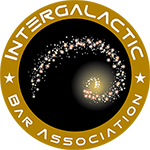November 4 – 64P/Swift-Gehrels at perihelion
November 5 – Conjunction of the Moon and Venus
November 5, 6 – Taurids Meteor Shower – The Taurids is a long-running minor meteor shower producing only about 5-10 meteors per hour. It is unusual in that it consists of two separate streams. The first is produced by dust grains left behind by Asteroid 2004 TG10. The second stream is produced by debris left behind by Comet 2P Encke. The shower runs annually from September 7 to December 10. It peaks this year on the the night of November 5. The thin crescent moon will set early in the evening leaving dark skies for viewing. Best viewing will be just after midnight from a dark location far away from city lights. Meteors will radiate from the constellation Taurus, but can appear anywhere in the sky
November 6 – Mercury at Greatest Eastern Elongation – The planet Mercury reaches greatest eastern elongation of 23.3 degrees from the Sun. This is the best time to view Mercury since it will be at its highest point above the horizon in the evening sky. Look for the planet low in the western sky just after sunset
November 7 – New Moon – The Moon will be located on the same side of the Earth as the Sun and will not be visible in the night sky. This phase occurs at 16:02 UTC. This is the best time of the month to observe faint objects such as galaxies and star clusters because there is no moonlight to interfere.
November 8 – Conjunction of the Moon and Jupiter
November 9 – Conjunction of the Moon and Mercury
November 11 – 38P/Stephan-Oterma at perihelion
November 14 – The Moon at apogee
November 15 – Moon at First Quarter; Conjunction of the Moon and Mars
November 16 – Asteroid 3 Juno at opposition
November 17 – M45 is well placed
November 17, 18 – Leonids Meteor Shower – The Leonids is an average shower, producing up to 15 meteors per hour at its peak. This shower is unique in that it has a cyclonic peak about every 33 years where hundreds of meteors per hour can be seen. That last of these occurred in 2001. The Leonids is produced by dust grains left behind by comet Tempel-Tuttle, which was discovered in 1865. The shower runs annually from November 6-30. It peaks this year on the night of the 17th and morning of the 18th. The waxing gibbous moon will set shortly after midnight leaving fairly dark skies for what could be a good early morning show. Best viewing will be from a dark location after midnight. Meteors will radiate from the constellation Leo, but can appear anywhere in the sky.
November 21 – the Moon at aphelion
November 23 – Full Moon – The Moon will be located on the opposite side of the Earth as the Sun and its face will be will be fully illuminated. This phase occurs at 05:40 UTC. This full moon was known by early Native American tribes as the Full Beaver Moon because this was the time of year to set the beaver traps before the swamps and rivers froze. It has also been known as the Frosty Moon and the Hunter’s Moon.
November 26 – Jupiter at solar conjunction; the Moon at perigee
November 27 – Mercury at inferior solar conjunction; close approach of the Moon and M44
November 28 – C/2016 N6 (PANSTARRS) reaches its brightest
November 29 – Mercury at perihelion; the Moon at last quarter; Venus at brightest
